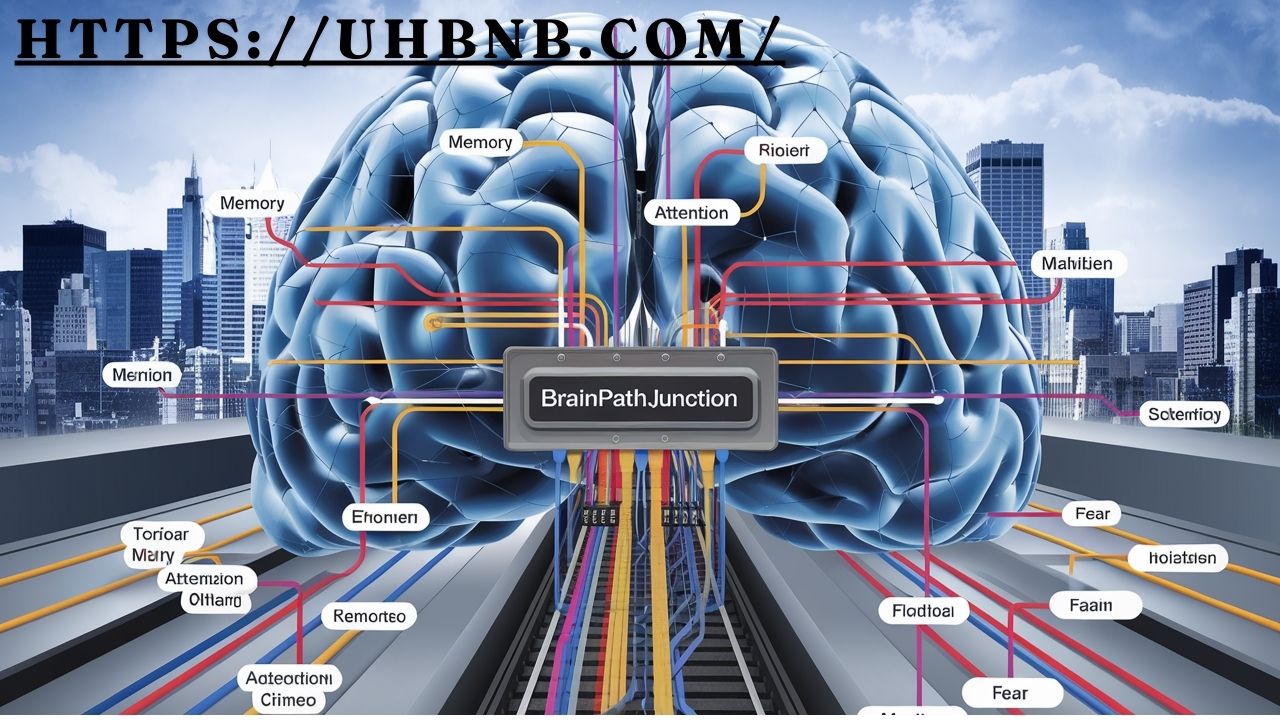Introduction
Imagine a world where the human brain is mapped out like a city’s subway system, each connection leading us to discoveries. This exciting concept is at the heart of BrainPathJunction, a revolutionary approach to understanding the brain’s complex networks. it is where science meets technology, offering insights that can change the way we approach mental health, cognitive function, and even artificial intelligence.
What is BrainPathJunction?
BrainPathJunction is a metaphor that captures the brain’s intricate web of connections. Just as trains travel through intersections on a railway system, electrical impulses move through neural pathways in the brain. By studying these junctions, scientists can better understand how our brains function.
The more we learn about these pathways, the more we can improve treatment for neurological disorders such as Alzheimer’s, Parkinson’s, and epilepsy.
It provides a framework for mapping out the brain’s electrical signals, helping researchers pinpoint where things go wrong when certain conditions are present. It is an essential tool in the fight against mental illness and cognitive decline.
The Role of Technology in BrainPathJunction
The quick progression of innovation has made it conceivable. Thanks to artificial intelligence (AI) and machine learning, scientists can now create detailed maps of neural networks. These maps help researchers identify abnormal patterns that could lead to mental health problems or neurological disorders.
For example, by analyzing data collected through BrainPathJunction, AI systems can detect early signs of dementia or depression. This kind of early detection could revolutionize the way we treat these conditions, offering patients more effective treatment options before the disease progresses too far.
In addition, it allows for personalized medicine. By understanding an individual’s unique neural pathways, doctors can tailor treatments to meet their specific needs. This precision medicine approach can greatly improve patient outcomes, offering hope to millions of people worldwide.
Mental Health and BrainPathJunction
Mental health is one area that stands to benefit greatly from the insights gained through BrainPathJunction. Conditions like anxiety, depression, and PTSD are often difficult to treat because they involve complex brain chemistry and networks.
It helps to identify which parts of the brain are affected and how these areas communicate with each other.
Through this understanding, mental health professionals can develop more targeted therapies. For example, brain stimulation techniques like transcranial magnetic stimulation (TMS) could be used more effectively to treat depression by focusing on the exact neural pathways that are out of balance.
Cognitive Enhancement and BrainPathJunction
Another exciting application of BrainPathJunction is cognitive enhancement. By studying neural connections, researchers are beginning to understand how we can improve memory, learning, and overall brain function. This could lead to breakthroughs in education and learning strategies, especially for people with learning disabilities.
Brain training programs that target specific neural pathways can help improve cognitive performance, making it easier for people to learn new skills or retain information. It could one day allow us to enhance our brain’s natural abilities, opening up new possibilities for human potential.
Artificial Intelligence and BrainPathJunction
Artificial intelligence is closely linked with BrainPathJunction because AI systems are modeled after the human brain’s networks. By studying how our neural pathways function, AI developers can create smarter, more efficient machines. This has wide-ranging applications, from improving voice recognition software to developing robots that can perform complex tasks.
AI systems designed based on it can process information more like a human brain, making them more intuitive and capable of learning from their environment. This advancement could revolutionize industries like healthcare, manufacturing, and even customer service.
BrainPathJunction and Neurological Disorders
Neurological disorders affect millions of people worldwide, and many of these conditions remain difficult to treat. It offers hope by providing a deeper understanding of how these disorders disrupt the brain’s normal functioning.
For example, in the case of epilepsy, it helps researchers trace the abnormal electrical activity that causes seizures. By identifying the exact location of these electrical disruptions, doctors can develop more effective treatments or even perform surgery to correct the problem.
Similarly, in conditions like Parkinson’s disease, BrainPathJunction allows researchers to study the neural pathways that control movement. This knowledge could lead to new treatments that slow down or stop the progression of the disease, giving patients a better quality of life.
The Future of BrainPathJunction
The future of BrainPathJunction is bright, with endless possibilities for improving human health and well-being. As technology continues to evolve, so too will our ability to map and understand the brain’s complex networks. This will lead to new treatments for mental health disorders, cognitive enhancement techniques, and even smarter AI systems.
One of the most exciting aspects of BrainPathJunction is its potential to unlock the mysteries of consciousness. Understanding how neural pathways create thought, memory, and awareness could answer some of the biggest questions in neuroscience.
Conclusion
BrainPathJunction represents a bold new frontier in neuroscience, offering a roadmap to better mental health, enhanced cognitive function, and revolutionary AI technology. By studying the brain’s intricate pathways, we can develop personalized treatments, improve our understanding of neurological disorders, and even enhance human capabilities.
As researchers continue to explore the possibilities of it, we move closer to a future where the brain’s complexities are no longer a mystery. This intersection of technology and neuroscience holds the key to unlocking the full potential of the human mind, offering hope and opportunity to people around the world.
The concept of BrainPathJunction may sound like something from science fiction, but it’s rapidly becoming a reality. With each discovery, we take another step toward a deeper understanding of the brain, its potential, and how we can harness that power for the betterment of all.
FAQs about BrainPathJunction
1. What is BrainPathJunction?
BrainPathJunction is a symbolic representation of the brain’s complex network of neural pathways. It focuses on mapping and studying these connections to improve understanding of mental health, cognitive function, and neurological disorders.
2. How does BrainPathJunction work?
It works by using technology such as artificial intelligence and machine learning to create detailed maps of neural pathways. These maps allow scientists to track the brain’s electrical signals and identify abnormal patterns linked to mental health issues and neurological conditions.
3. What role does artificial intelligence play in BrainPathJunction?
Artificial intelligence is crucial to BrainPathJunction as it helps process large amounts of data and provides insights into the brain’s neural networks. AI can detect early signs of mental health problems, improve diagnostics, and enhance the development of personalized treatments.
4. Can BrainPathJunction help with mental health treatment?
Yes, BrainPathJunction is designed to improve the understanding of how mental health conditions affect the brain. By mapping neural pathways, it helps doctors develop more targeted treatments for anxiety, depression, PTSD, and other disorders.
5. Is BrainPathJunction useful for cognitive enhancement?
Absolutely. BrainPathJunction helps researchers understand how focusing on neural pathways can improve memory, learning, and overall brain performance. This could lead to new techniques for brain training and cognitive enhancement.




